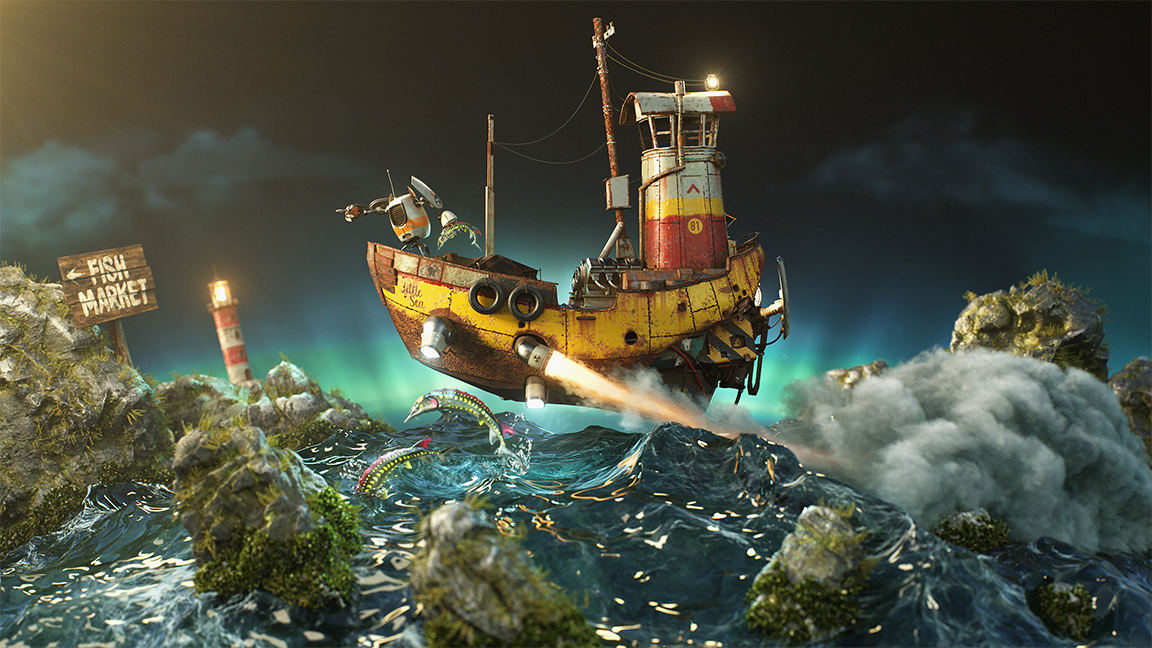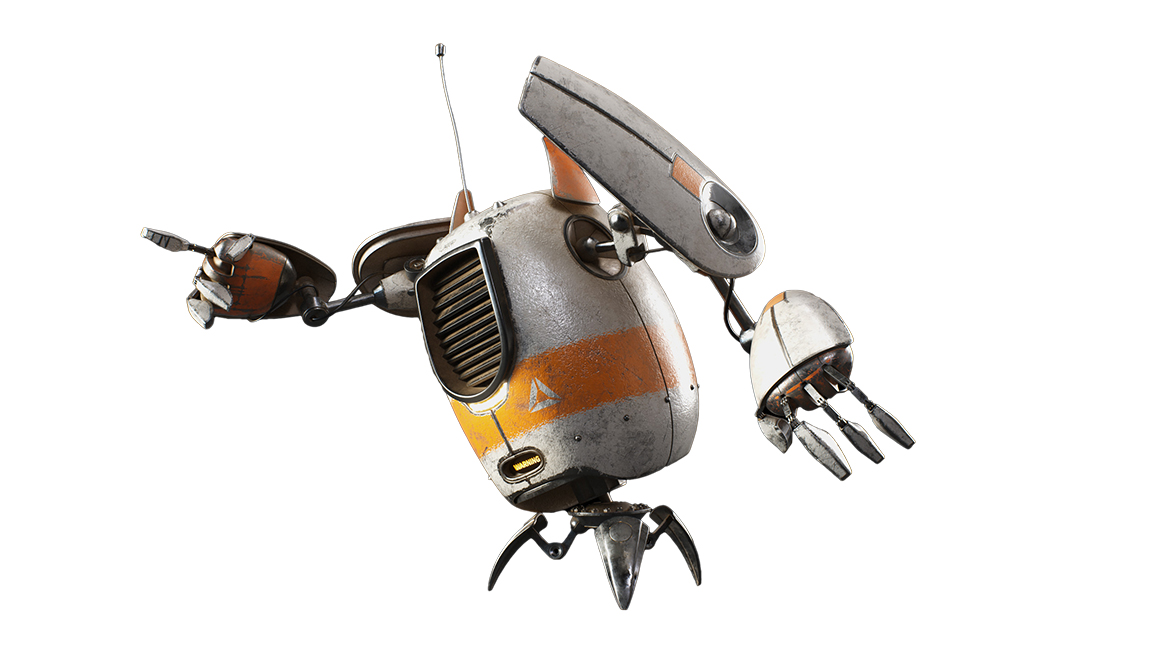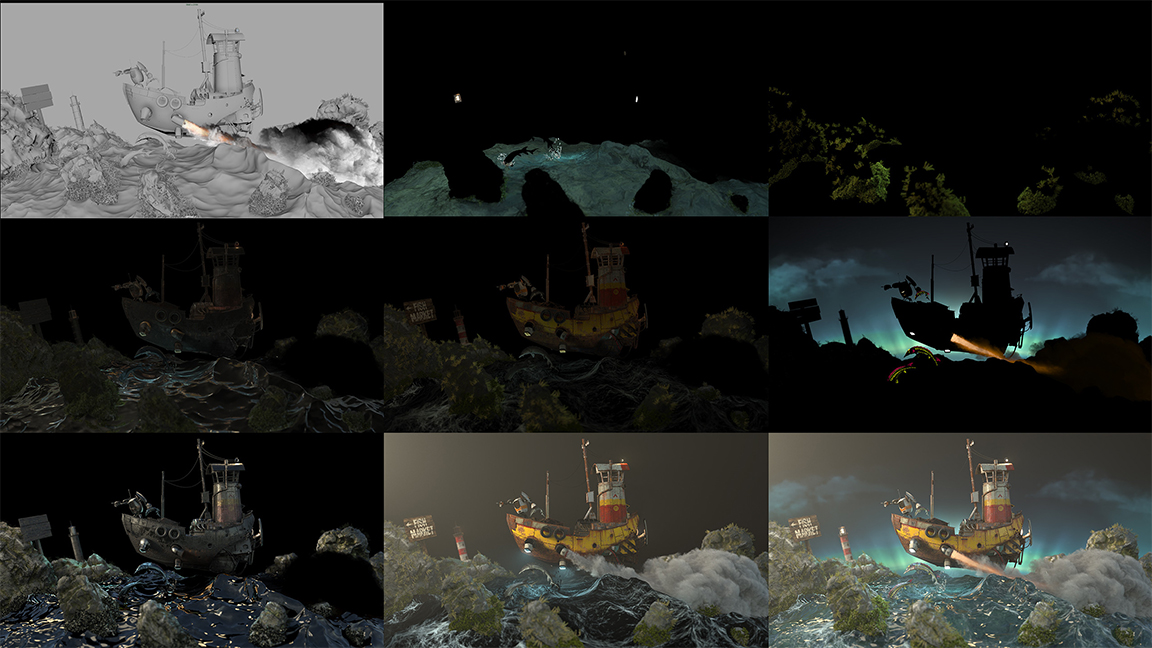
RenderMan 25 is the latest edition of Pixar's rendering tools, available to everyone. RenderMan has always been a bit of an enigma in my experience. The fact that it’s been used to render some of the biggest, and most high-profile, animated feature films only contributes to this mystery.
It has been a perfect renderer for animation and VFX studios to create breathtaking final-frame films, but it’s other renderers such as V-Ray and Arnold that have become the go-to programs for the overwhelming majority of the 3D industry.
RenderMan, now at version 25, is a powerhouse, owing its developmental success largely to the fact that it has been used in such big-budget films. (See our look at how RenderMan was used in Luca & The Sea.) With each film providing new technical challenges and directors desiring to push the boundaries even further, its developers have regularly been encouraged and pushed to add new features and refine existing ones.
RenderMan 24 was a big update, with the most notable addition its all-new hybrid CPU and GPU renderer called XPU. So where can RenderMan 25 go from there? The version under the spotlight in this review isn’t quite as big and bold, but still definitely packs a punch. Let’s take a look at its new denoiser, improvements to XPU, and further developments to the Stylised Looks tools.
RenderMan 25 review: I love its denoiser

No artist likes noise. I’d care not to know the number of hours and days I’ve spent fine-tuning settings to remove the noise from my renders. The problem, traditionally, has been that removing noise from images has resulted in higher render times. Because most noise is removed by increasing the number of samples in lights and materials, the resulting render times can easily go through the roof.
Denoising, as a post-production effect, has been increasingly finding its way into render tools, but I haven’t seen one anywhere near as good as that which ships with RenderMan. Pixar has been using it since Toy Story 4, which released in 2019, including recently with Lightyear.
It was developed by Disney Research and produces incredible results, even under the most testing of scenarios such as motion blur and animation. It’s also excellent on shots containing a lot of hair and fur, which has obviously been essential for Disney and Pixar movies that rely heavily on characters with these features. Its effectiveness is largely due to the fact that it’s machine-learned and contains a neural network trained on thousands of seven-frame sequences, including from multiple renderers, productions and studios.
This feature is most certainly production-ready and will enable artists and studios to drastically reduce the number of samples they render with, in the safe assurance that they can just clear it up in post-production. This doesn’t necessarily mean that high sampling is a thing of the past, as there are many other benefits of throwing extra samples into calculations.
RenderMan 25 review: what's XPU?

RenderMan 24 saw the introduction of a hybrid rendering option called XPU; in essence, a blend between CPU and GPU rendering. To some, this was a surprise move, mainly because RenderMan has, historically speaking, been so focused on delivering incredible final-frame results that rely on a heavy number of calculations. Achieving the same level of quality in an interactive environment didn’t seem possible.
In reality, XPU is still a long way off delivering the quality required for films and animations, but it is becoming an ideal tool for look dev work, especially as it becomes increasingly feature rich. RenderMan 25 sees the addition of Volumes such as smoke, fire and explosions. XPU can also now handle camera effects such as depth of field and lens aberrations. Being able to see a near-final result in a fraction of the time will help studios close the gap between creativity and end results.
RenderMan can be increasingly relied upon to create stylised results
The final feature worth a mention is the improvements made to the Stylized Looks toolset. By offering more controls for toon shading, hatching and line distortion, RenderMan can be increasingly relied upon to create stylised results that impress audiences.
An essential element of hand-drawn animations that are created with a computer is that they need to look natural. RenderMan now provides an option to fractally distort lines so that computer-generated lines more closely match their hand-drawn counterparts.
As ever the opportunity to use the same set of render tools as Disney and Pixar is hard to turn away from, but it can be complex and it can be more than you need. It can also come in small advanced, which means this latest edition isn't as full of new features as the previous RenderMan 24 - but that amazing denoiser is fantastic.
This content originally appeared in 3D World magazine. Subscribe to 3D World at Magazines Direct.







